A monopropellant rocket is a rocket that uses a single chemical as its propellant. Monopropellant rockets are commonly used as small attitude and trajectory control rockets in satellites, rocket upper stages, manned spacecraft, and spaceplanes.

The American Institute of Aeronautics and Astronautics (AIAA) is a professional society for the field of aerospace engineering. The AIAA is the U.S. representative on the International Astronautical Federation and the International Council of the Aeronautical Sciences. In 2015, it had more than 30,000 members among aerospace professionals worldwide.

A reaction control system (RCS) is a spacecraft system that uses thrusters to provide attitude control and translation. Alternatively, reaction wheels are used for attitude control. Use of diverted engine thrust to provide stable attitude control of a short-or-vertical takeoff and landing aircraft below conventional winged flight speeds, such as with the Harrier "jump jet", may also be referred to as a reaction control system.

A launch vehicle is typically a rocket-powered vehicle designed to carry a payload from Earth's surface or lower atmosphere to outer space. The most common form is the ballistic missile-shaped multistage rocket, but the term is more general and also encompasses vehicles like the Space Shuttle. Most launch vehicles operate from a launch pad, supported by a launch control center and systems such as vehicle assembly and fueling. Launch vehicles are engineered with advanced aerodynamics and technologies, which contribute to high operating costs.

Eberhardt Rechtin was an American systems engineer and respected authority in aerospace systems and systems architecture.
Andrews Space was founded in 1999 by Jason Andrews and Marian Joh to be a catalyst in the commercialization, exploration and development of space. Originally named Andrews Space & Technology, the company shortened its name in 2003 to Andrews Space. Over its life the company developed many unique technologies and space transportation architectures for the US Government and commercial customers. The company is now Spaceflight Systems, a subsidiary of Spaceflight Industries, Inc.
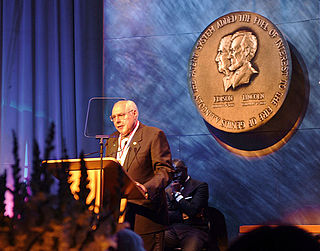
Frank J. "Cepi" Cepollina is an American engineer and inventor. He was officially inducted to the National Inventors Hall of Fame for his pioneering concept of in-orbit satellite servicing in May 2003. His organizational leadership style has been compared to that of Al Davis of the National Football League's Oakland Raiders.
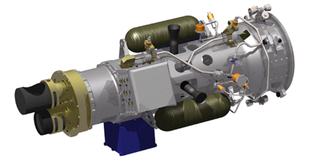
XSS-10 was a small, low-cost micro-spacecraft developed by the U.S. Air Force Research Laboratory's Space Vehicles Directorate to test technology for line-of-sight guidance of spacecraft. The project was initiated at AFRL by Program Manager David Barnhart and completed by Georgia Tech Research Institute engineer Thom Davis and team. The project was declared a success shortly after launch.
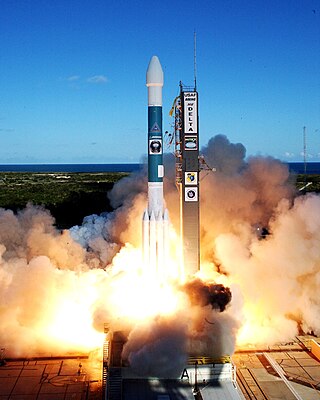
The Micro-satellite Technology Experiment (MiTEx) is a microsatellite-based mission launched into geosynchronous orbit 21 June 2006 aboard a Delta II rocket. The USAF described the mission as a joint "technology demonstration" mission for the Defense Advanced Research Projects Agency (DARPA), the United States Air Force (USAF) and the United States Navy.
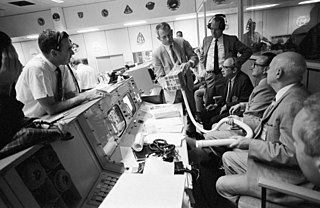
Aerospace engineering is the primary field of engineering concerned with the development of aircraft and spacecraft. It has two major and overlapping branches: aeronautical engineering and astronautical engineering. Avionics engineering is similar, but deals with the electronics side of aerospace engineering.

An orbital propellant depot is a cache of propellant that is placed in orbit around Earth or another body to allow spacecraft or the transfer stage of the spacecraft to be fueled in space. It is one of the types of space resource depots that have been proposed for enabling infrastructure-based space exploration. Many depot concepts exist depending on the type of fuel to be supplied, location, or type of depot which may also include a propellant tanker that delivers a single load to a spacecraft at a specified orbital location and then departs. In-space fuel depots are not necessarily located near or at a space station.
Value-driven design (VDD) is a systems engineering strategy based on microeconomics which enables multidisciplinary design optimization. Value-driven design is being developed by the American Institute of Aeronautics and Astronautics, through a program committee of government, industry and academic representatives. In parallel, the U.S. Defense Advanced Research Projects Agency has promulgated an identical strategy, calling it value-centric design, on the F6 Program. At this point, the terms value-driven design and value-centric design are interchangeable. The essence of these strategies is that design choices are made to maximize system value rather than to meet performance requirements.

Space architecture is the theory and practice of designing and building inhabited environments in outer space. This mission statement for space architecture was developed at the World Space Congress in Houston in 2002 by participants in the 1st Space Architecture Symposium, organized by the Aerospace Architecture Subcommittee of the Design Engineering Technical Committee (DETC) of the American Institute of Aeronautics and Astronautics (AIAA).
John L. Junkins is an American academic and a distinguished professor of aerospace engineering in the College of Engineering at Texas A&M University specializing in spacecraft navigation, guidance, dynamics, and control. He holds the Royce E. Wisenbaker Endowed Chair at Texas A&M University and also serves as the Founding Director of the Hagler Institute for Advanced Study at Texas A&M University, since its founding in December 2010. On November 24, 2020, Junkins was announced as the interim President of Texas A&M University starting January 2021. He was the interim president until May 31, 2021.

The R-4D is a small hypergolic rocket engine, originally designed by Marquardt Corporation for use as a reaction control system thruster on vehicles of the Apollo crewed Moon landing program. Aerojet Rocketdyne manufactures and markets modern versions of the R-4D.
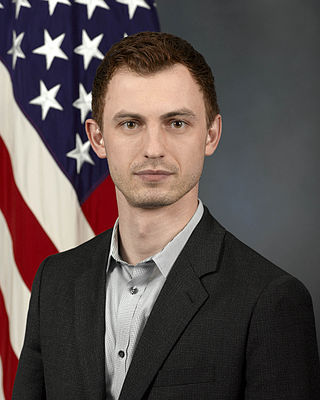
Paul Eremenko is a Ukrainian American innovator and technology executive. He was formerly the Chief Technology Officer and Senior Vice President of United Technologies Corporation. Earlier, he served as the CTO of Airbus, and former CEO of Airbus Silicon Valley innovation center. He is a former Google executive and head of Google's Project Ara, an effort to create an open, modular smartphone platform. Eremenko was named one of the Top-10 Tech Leaders of 2015 in FORTUNE Magazine. Eremenko has also come out as a strong proponent of artificial intelligence and autonomy research. Eremenko has cited his desire to build a starship as the motivation underpinning his career.
Multi-mission Modular Spacecraft, also known as the MMS, was originally designed by NASA to serve the largest array of functions for the space program possible to decrease the cost of space missions. It was designed to operate in four distinct areas of missions. The MMS began development about a decade before it became implemented in the 1980s and 1990s. The basic MMS was made up of three different modules. They include the altitude control, communications and data handling, and the power subsystems. The idea of a modular system serving many purposes was the pioneer of the leading systems within the space technology ecosystem today as it has left a lasting legacy. The MMS was intended to be "Shuttle compatible", i.e. recoverable/serviceable by the Space Shuttle orbiter.

Mike Gruntman is a Russian-American physicist, space engineer, and author. He is professor of astronautics and aerospace engineering at the Viterbi School of Engineering, University of Southern California (USC).

Moriba Kemessia Jah CorrFRSE is an American space scientist and aerospace engineer who describes himself as a "space environmentalist", specializing in orbit determination and prediction, especially as related to space situational awareness and space traffic monitoring. He is currently an associate professor of Aerospace Engineering and Engineering Mechanics at the University of Texas at Austin. Jah previously worked as a spacecraft navigator at the NASA Jet Propulsion Laboratory, where he was a navigator for the Mars Global Surveyor, Mars Odyssey, Mars Express, Mars Exploration Rover, and his last mission was the Mars Reconnaissance Orbiter. He is a Fellow of the American Astronautical Society, the Air Force Research Laboratory, the International Association for the Advancement of Space Safety and, the Royal Astronomical Society. Jah was also selected into the 10th anniversary class of TED Fellows and was named a MacArthur Fellow in 2022. He also was selected into the AIAA class of Fellows and Honorary Fellows in the year of the 50th Anniversary of Apollo 11. The AIAA "confers the distinction of Fellow upon individuals in recognition of their notable and valuable contributions to the arts, sciences or technology of aeronautics and astronautics."
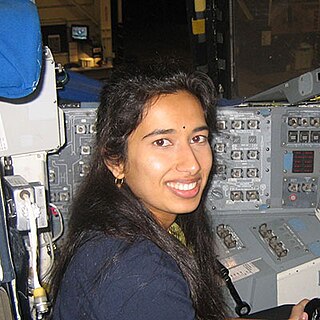
Swati Mohan is an Indian-American aerospace engineer and was the Guidance and Controls Operations Lead on the NASA Mars 2020 mission.
















